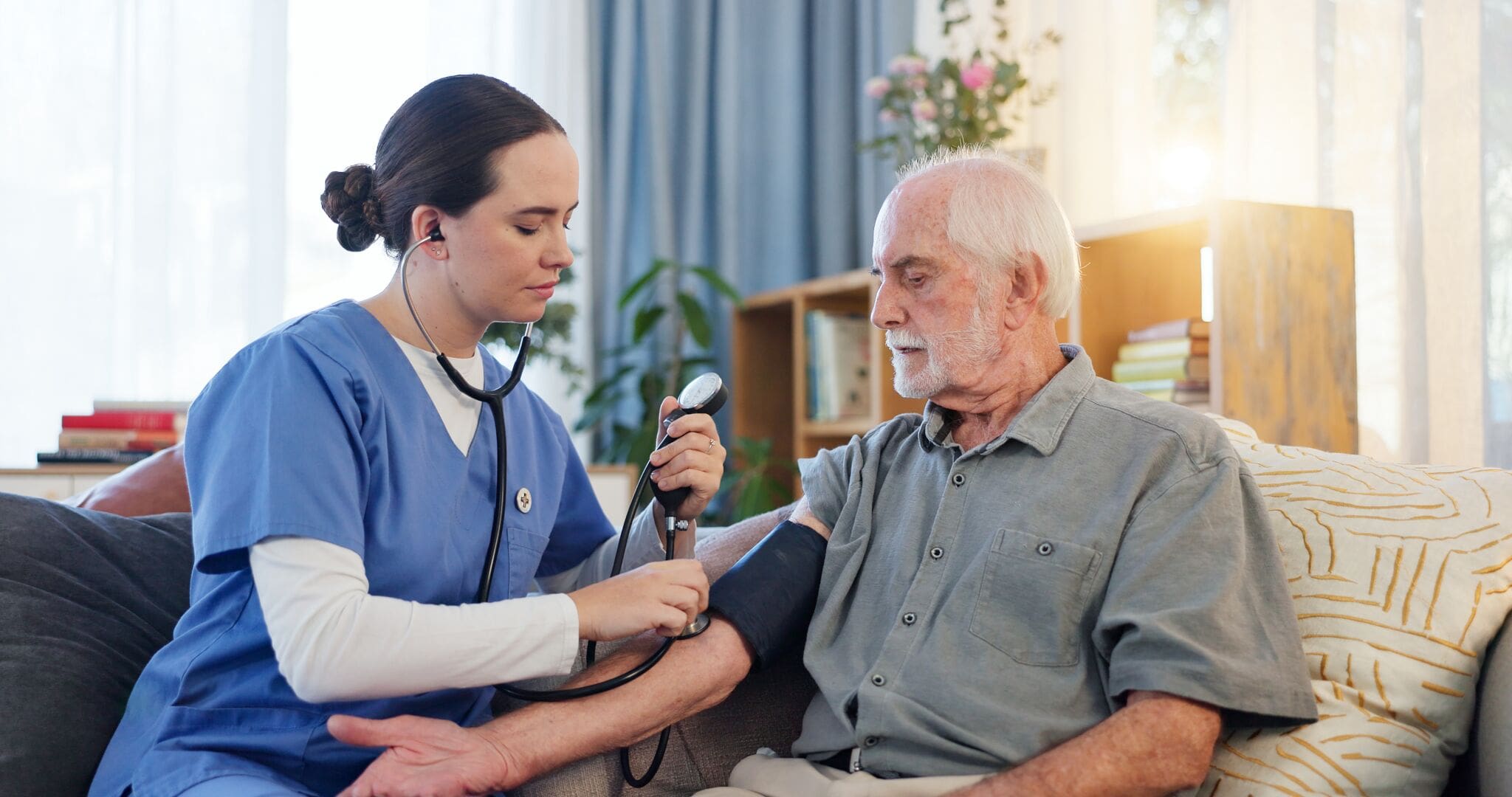In this article
According to Parkinson’s UK it is estimated that around 145,000 people in the UK are living with Parkinson’s disease and approximately 18,000 people are diagnosed with Parkinson’s disease each year.
The economic burden of Parkinson’s disease in the UK is significant. The cost to the NHS and social care services is estimated to be around £1.2 billion annually. This includes direct medical costs, social care, and indirect costs such as lost productivity.
What is Parkinson’s disease?
Parkinson’s disease is a neurodegenerative disorder that primarily affects the brain’s ability to control movement. It occurs when nerve cells in a part of the brain called the substantia nigra become damaged or die. These neurons are responsible for producing dopamine, a chemical that helps regulate movement and emotional responses. As dopamine levels decrease, symptoms of Parkinson’s begin to appear.
The disease is progressive, meaning symptoms worsen over time. While there is currently no cure, treatments are available to manage symptoms and improve quality of life.
What causes Parkinson disease?
The exact cause of Parkinson’s disease remains unknown, but research suggests it is likely due to a combination of genetic and environmental factors. In about 10-15% of cases, Parkinson’s is linked to genetic mutations. Some other causes of Parkinson’s disease includes:
- Environmental factors – exposure to toxins such as pesticides, herbicides, or heavy metals may increase the risk of Parkinson’s, though this link remains unclear.
- Age – the risk increases with age, particularly after age 60, though early-onset Parkinson’s can occur in those under 40 years old.
- Lewy bodies – abnormal protein deposits called Lewy bodies are found in the brains of people with Parkinson’s. These are thought to play a role in the death of dopamine-producing neurons. Lewy bodies are abnormal protein deposits that accumulate inside nerve cells in the brain. These deposits are primarily composed of a protein called alpha-synuclein, which clumps together and disrupts normal cellular function. Lewy bodies are a key pathological feature of several neurodegenerative diseases. Their presence helps explain the symptoms of these conditions and provides a target for research into potential treatments. Lewy bodies are linked to the symptoms of these conditions and give researchers clues for developing treatments.
Some studies suggest that brain inflammation or mitochondrial dysfunction, problems with cellular energy production may contribute to Parkinson’s. Inflammation is the body’s natural defence against injury or infection, but when it sticks around in the brain too long, it can become harmful. In Parkinson’s, this ongoing inflammation may contribute to the condition worsening over time.

Early signs of Parkinson’s
Spotting Parkinson’s early allows for timely intervention, helping to improve quality of life and slow symptom progression. Identifying Parkinson’s early and beginning treatment can make a difference. While there’s no cure, medications like levodopa and dopamine agonists help manage symptoms. Getting treatment sooner may improve movement and slow the progression of more severe effects.
- Managing symptoms early gives doctors a chance to personalise treatment, helping with issues like tremors, stiffness, or sleep problems. This can make daily life easier and more comfortable.
- Slowing disease progression – including neuroprotective therapies. Some treatments and lifestyle changes, for example exercise, diet, and certain medications may have neuroprotective effects, potentially slowing the progression of the disease.
- Preventing complications – early management can help prevent or delay complications such as falls, mobility issues, and cognitive decline.
- Better quality of life and independence – starting treatment early can help people stay mobile, steady, and independent for longer.
- Mental health support – early diagnosis allows for the prompt treatment of non-motor symptoms like depression, anxiety, and sleep disorders, which can significantly impact quality of life.
- Planning for the future and lifestyle adjustments – an early diagnosis gives people time to make informed decisions about lifestyle changes, work, and caregiving needs.
- Financial and legal planning – early recognition allows time to plan for future medical expenses, long-term care, and legal matters such as power of attorney or advance directives.
- Access to support and resources including support groups – early diagnosis connects individuals with support groups and organisations like Parkinson’s UK, providing emotional support, education, and resources.
- Rehabilitation services – access to physical therapy, occupational therapy, and speech therapy early on can help manage symptoms and improve daily functioning.
- Participation in research and clinical trials – early diagnosis may allow individuals to participate in clinical trials for new treatments or therapies, contributing to research and potentially accessing cutting-edge interventions. Early detection helps researchers study the disease in its initial stages, leading to a better understanding of its progression and the development of more effective treatments.
- Reducing misdiagnosis – Parkinson’s disease can be mistaken for other conditions, such as essential tremor or arthritis. Early recognition and evaluation by a specialist can ensure an accurate diagnosis and appropriate treatment. Misdiagnosis can lead to unnecessary or ineffective treatments. Early recognition helps ensure that individuals receive the right care from the start.
- Managing non-motor symptoms – Parkinson’s affects more than just movement, with issues like sleep problems, loss of smell, constipation, and mood changes. Recognising it early helps ensure both motor and non-motor symptoms are properly managed.
Some of the early symptoms include:
- Tremors – a slight shaking or tremor in the hand, finger, or chin, often occurring at rest.
- Small handwriting – a noticeable change in handwriting, known as micrographia, where letters become smaller and more crowded.
- Loss of smell -–difficulty smelling certain foods, such as bananas, pickles, or liquorice. Loss of smell, or hyposmia, is one of the earliest and most common non-motor symptoms of Parkinson’s disease. It often occurs years before the onset of motor symptoms like tremors, stiffness, or slowness of movement. While the exact reason for this symptom is not fully understood, research suggests it is linked to the underlying neurodegenerative processes of Parkinson’s.
- Sleep problems – restlessness during sleep, sudden movements, or acting out dreams, a condition called REM sleep behaviour disorder. Sleep problems are a common and often debilitating non-motor symptom of Parkinson’s disease, affecting up to 90% of people with the condition. These sleep disturbances can occur due to a combination of factors, including the neurodegenerative changes in the brain, the side effects of medications, and the impact of motor symptoms.
- Stiffness or slowness – difficulty moving or walking, often described as feeling stiff or slowed down. Stiffness (rigidity) and slowness of movement (bradykinesia) are two of the primary motor symptoms of Parkinson’s disease. These symptoms occur due to the progressive loss of dopamine-producing neurons in a part of the brain called the substantia nigra. Dopamine is a critical neurotransmitter that helps regulate movement, and its deficiency disrupts the brain’s ability to control and coordinate muscle activity.
- Soft speech – speaking more quietly or with a hoarse voice. Parkinson’s disease primarily affects movement, and speech is a complex motor activity that requires precise coordination of multiple muscles. Bradykinesia impacts the muscles used for speech, including the lips, tongue, jaw, and vocal cords. Movements become slower and weaker, making speech quieter and less clear. Speaking takes more effort, making it harder to maintain volume or project the voice. Muscle rigidity in the face, throat, and chest can make it harder to move freely, affecting speech clarity and volume. Stiffness in the breathing muscles can make deep breaths more difficult, reducing vocal strength. Speaking relies on a balance of breathing, vocal cord movement, and articulation, but Parkinson’s can disrupt this, leading to softer and less clear speech. Weakness in the diaphragm and other breathing muscles can also limit airflow, making it harder to speak loudly and clearly.
These early signs can be subtle and may be mistaken for normal aging, so it’s important to consult a healthcare professional if they persist.
Common Parkinson’s symptoms
As Parkinson’s progresses, symptoms become more pronounced and can be divided into motor and non-motor symptoms:
Motor symptoms includes:
- Tremors – shaking that usually begins in the hands or fingers.
- Bradykinesia – slowness of movement, making simple tasks difficult and time-consuming.
- Muscle stiffness – rigidity in the limbs or trunk, which can limit range of motion.
- Postural instability – impaired balance and coordination, leading to falls.
- Shuffling gait – walking with small, shuffling steps.
Non-motor symptoms includes:
- Cognitive changes – memory problems, difficulty concentrating, or dementia in later stages.
- Mood disorders – depression, anxiety, and apathy are common.
- Sleep disturbances – insomnia, excessive daytime sleepiness, or vivid dreams.
- Autonomic dysfunction – issues with blood pressure, digestion, and bladder control.
- Fatigue – persistent tiredness that doesn’t improve with rest.

Treatment of Parkinson’s
Parkinson’s treatment focuses on managing symptoms, improving quality of life, and slowing progression. While there’s no cure, a mix of medications, therapies, lifestyle changes, and sometimes surgery can help people manage the condition effectively.
Medications
Medications are the cornerstone of Parkinson’s treatment, primarily focusing on replenishing or mimicking dopamine, the neurotransmitter that is deficient in the disease. Examples of medication commonly used include:
- Levodopa – this is converted into dopamine in the brain, helping to restore dopamine levels and improve motor symptoms. It is highly effective for managing motor symptoms like stiffness, slowness, and tremors. Long-term use can lead to motor complications such as involuntary movements and symptoms returning before the next dose.
- Dopamine agonists – these mimic the effects of dopamine by stimulating dopamine receptors in the brain. These are often prescribed for younger patients or as an adjunct to levodopa. Side effects may include nausea, dizziness, hallucinations, and compulsive behaviours, for example gambling or shopping.
- MAO-B inhibitors – this is a medication that works to inhibit the enzyme monoamine oxidase B (MAO-B), which breaks down dopamine, thereby increasing dopamine levels. Examples include Selegiline, Rasagiline, and Safinamide. They can be used alone in early stages or with levodopa in later stages. They are generally well-tolerated but may cause insomnia or interactions with other medications.
- Anticholinergics – these drugs help balance acetylcholine levels, which can be elevated due to dopamine deficiency. Examples include Trihexyphenidyl and Benztropine. It is primarily used to treat tremors and rigidity. Side effects can include cognitive impairment, dry mouth, and blurred vision, especially in older adults.
- Amantadine – originally an antiviral medication, amantadine can help reduce dyskinesia’s and improve motor symptoms. It is often used in early stages or to manage levodopa-induced dyskinesia’s. Side effects may include swelling, dizziness, or livedo reticularis, which is a skin condition.
Surgical Treatments
For advanced Parkinson’s disease or when medications are no longer effective, surgical options may be considered. These treatments can include:
- Deep Brain Stimulation (DBS) – this is where electrodes are implanted in specific areas of the brain, for example subthalamic nucleus or globus pallidus and connected to a pulse generator. Electrical impulses help regulate abnormal brain activity. Effectiveness is good as it can significantly reduce motor symptoms and medication requirements. It is typically for individuals with advanced Parkinson’s who experience motor fluctuations or dyskinesia’s. Some of the risks include Infection, bleeding, or hardware-related complications.
- Focused Ultrasound (FUS) – this uses focused ultrasound waves to target and destroy small areas of brain tissue responsible for tremors. It is approved for treating tremors in Parkinson’s. It is non-invasive and does not require implants, however it is not suitable for all symptoms or stages of the disease.
Therapies
Non-pharmacological therapies play a crucial role in managing Parkinson’s symptoms and improving quality of life.
- Physical therapy can improve mobility, balance, and strength through exercises and stretching. It can reduce stiffness, improves gait, and prevents falls.
- Occupational therapy can help with daily activities and adapts the home environment to improve independence. The benefits includes enhancing fine motor skills and reduces the risk of injury.
- Speech therapy is another type of therapy and the focus of this is to address soft speech, swallowing difficulties, and articulation problems.
- Cognitive Behavioural Therapy (CBT) can help manage depression, anxiety, and other mood disorders associated with Parkinson’s. The benefits include improving emotional well-being and developing coping strategies.
Lifestyle changes can complement medical treatments and improve overall health. Some lifestyle changes include:
- Staying active – activities like aerobic exercise, strength training, yoga, tai chi, and dance can help with mobility, balance, and mood. They may also offer neuroprotective benefits.
- Diet – a balanced diet rich in fruits, vegetables, whole grains, and lean proteins. High-fibre foods to combat constipation, and adequate hydration can support medication effectiveness. Certain substances can worsen Parkinson’s symptoms or interact with medications. Alcohol can interfere with medications and worsen balance and coordination. Some research suggests caffeine may have protective benefits, but too much can affect sleep or increase anxiety. A balanced diet, tailored to individual needs, can play a key role in managing Parkinson’s effectively. By optimising medication effectiveness, addressing gastrointestinal symptoms, supporting brain health, and maintaining overall well-being, diet plays a crucial role in enhancing quality of life for people with Parkinson’s. Consulting a dietitian or healthcare professional can help create a personalised nutrition plan that meets specific needs and goals.
- Sleep hygiene – maintaining a regular sleep schedule, creates a comfortable sleep environment, and can address sleep disorders like insomnia or REM sleep behaviour disorder.
Research is ongoing to develop new therapies for Parkinson’s disease, including:
- Gene therapy – the goal is to deliver genes to the brain to promote dopamine production or protect neurons. Several clinical trials are already underway.
- Stem cell therapy – the goal is to replace damaged dopamine-producing neurons with healthy ones derived from stem cells. This is still in experimental stages.
- Neuroprotective therapies – the goal is to slow or halt disease progression by protecting neurons from damage. Examples include drugs targeting alpha-synuclein, inflammation, or mitochondrial dysfunction.
Connecting with others who have Parkinson’s can provide emotional support and practical advice. Organisations like Parkinson’s UK and the Michael J. Fox Foundation offer valuable information and resources.
The treatment of Parkinson’s disease requires a personalised approach tailored to the individual’s symptoms, stage of the disease, and overall health. While medications like levodopa remain the mainstay of treatment, therapies, lifestyle changes, and surgical options can significantly improve quality of life. Ongoing research offers hope for more effective treatments and, ultimately, a cure. If you or a loved one has Parkinson’s, work closely with a healthcare team to develop a comprehensive treatment plan.

How to support someone living with Parkinson’s disease
Supporting a loved one with Parkinson’s disease involves a combination of emotional support, practical assistance, and encouragement to help them manage symptoms and maintain their quality of life. Here are some key ways to help:
- Educate yourself – learn about Parkinson’s disease, its symptoms, progression, and treatments to better understand what your loved one is experiencing.
- Be patient and compassionate – Parkinson’s can cause physical and emotional challenges. Offer patience, empathy, and reassurance during difficult moments.
- Assist with daily activities – help with tasks that may become challenging, such as cooking, cleaning, dressing, or bathing, while encouraging their independence.
- Encourage exercise and therapy – support their participation in physical therapy, speech therapy, or exercise programs like yoga, tai chi, or walking to improve mobility and well-being.
- Help manage medications – assist with organising and taking medications on time, and monitor for side effects or changes in symptoms.
- Promote a healthy lifestyle – encourage a balanced diet, hydration, and good sleep habits to support overall health.
- Be a communication partner – listen actively, speak clearly, and be patient if they have speech difficulties. Use non-verbal cues like gestures or writing if needed.
- Offer emotional support – be there with encouragement, companionship, and a positive outlook. Help them stay connected with loved ones and support networks.
- Adapt the home environment – make safety modifications, such as installing grab bars, removing tripping hazards, and ensuring good lighting.
- Look after yourself – caregiving can be challenging. Make time for self-care, seek support, take breaks, and connect with caregiver support groups.
By offering consistent support and understanding, you can help your loved one navigate the challenges of Parkinson’s disease while maintaining their dignity and quality of life.






